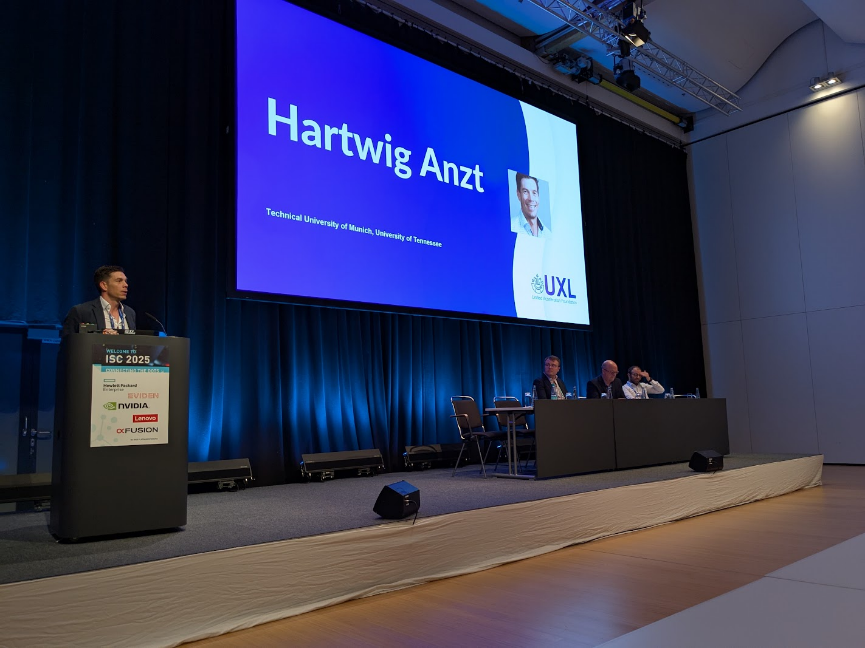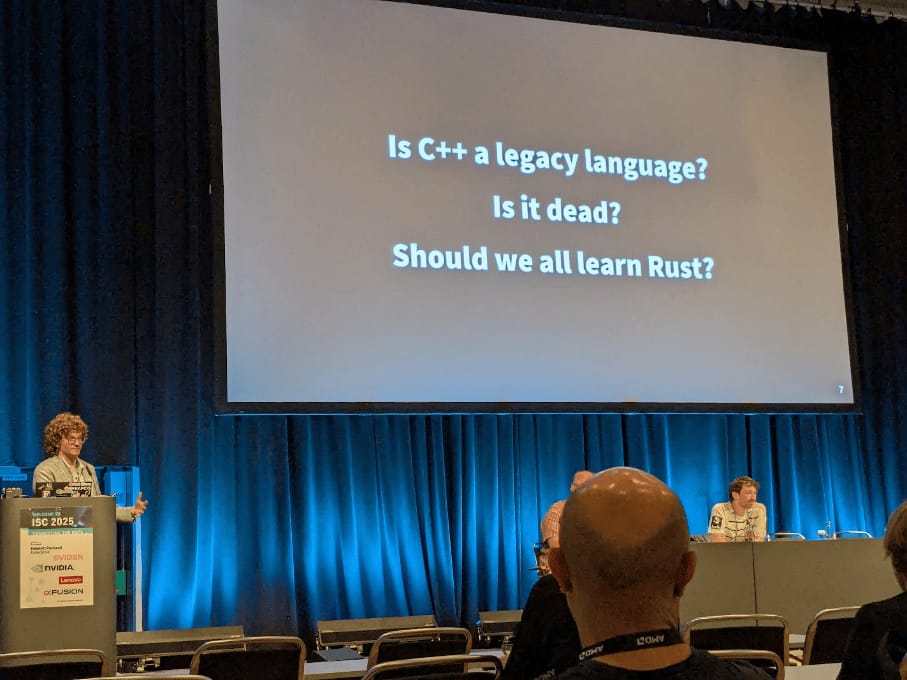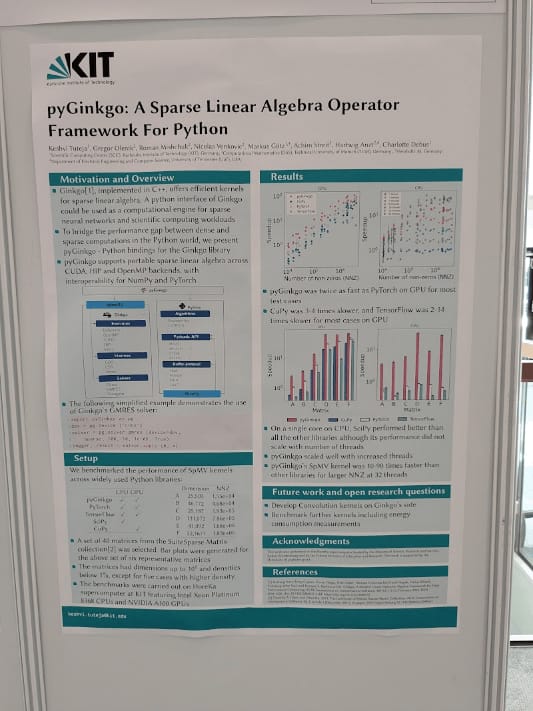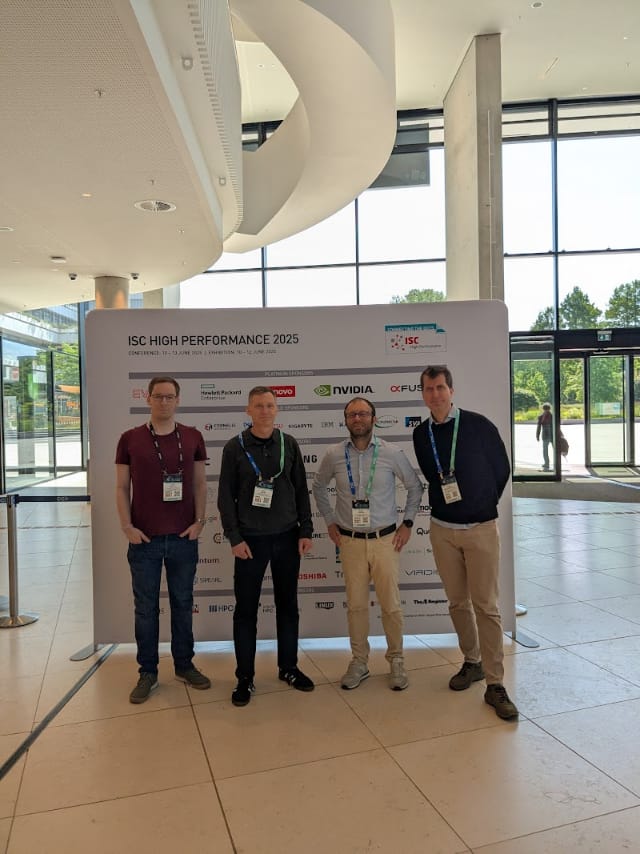Open Standards and representing the UXL Foundation at ISC25
Open Standards and representing the UXL Foundation at ISC25
I have just returned from ISC in Hamburg for the third year in a row. This is a key event for HPC in Europe, and I have started to get a perspective on the changes from year to year.
My first observation was that this year I saw less of a focus on developers in the exhibition area. Previously, it’s been possible to see demonstrations and technical talks from engineers, but this year felt as though there were more screens with videos rather than tangible technical content that gets into the details of the code. Given the number of attending researchers working on software, this would have been a good place to show off what is possible in the conference exhibition. It felt like a missed opportunity for many of the exhibitors.
The top500 showcase is always one of the first and most anticipated sessions, as it is where they announce the latest lists of top supercomputers. Our UXL members are represented in the top 10 supercomputers, with Fujitsu and Arm providing the Fugaku machine and Intel delivering the Aurora machine.
As someone who lives in the UK I was also pleased to see the University of Bristol’s machine Isambard-AI make #11 in the top500 list, not only do I know Simon and his team who have been instrumental in setting up this new machine, but it is also a great resource for the UK community.
There was more great news for the UK with a major announcement from the University of Edinburgh. It has been confirmed that they are to host a £750 million/$1 billion supercomputer project. This was especially exciting as I am based out of Edinburgh. I look forward to seeing more details soon.
The ISC conference agenda was impressive, with many different sessions across a broad range of interesting topics. From main track presentations to student showcases, tutorials, wokshops and more; there’s bound to be something for everyone. In fact, it is often hard to know which sessions to go to, but fortunately many of them are available on the platform as recorded sessions.
Open Standards Birds of a Feather
I hosted a Birds of a Feather session focused on Open Standards and was extremely lucky to be joined by Hartwig Antz, Tom Deakin, Marc Gaucheron, and Biagio Cosenza who have led standards development for areas such as SPARSE math and SYCL. We ran some polls during the session and got some insights into the audience.
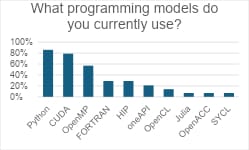 |
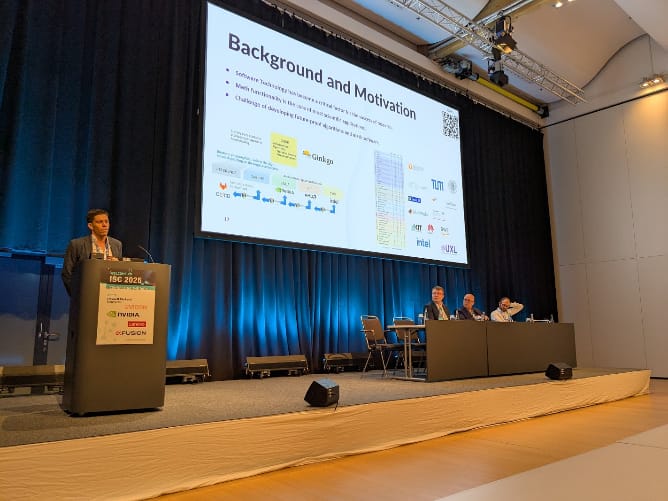 |
The first question we asked was what the audience was using for software development, and the results give us a good idea of where the community is in terms of programming models. You could argue that Python is a programming language, but given the extent of the Python frameworks available like numpy and scikit-learn I see it as more akin to a programming model.
Python has been leading the Tiobe programming language index for the past few years, and its rise coincided with the downward trend of developers using Java or C# and the rise of AI. I don’t currently see lots of use of Python in traditional HPC use cases, so this is maybe a trend towards more AI research; it might have been interesting to know how many of those respondents are using it with AI versus traditional HPC use cases. Certainly, there are a growing number of libraries adding Python bindings and interfaces.
Are you using Python with GPUs in your applications? What libraries are you using?
Let me know.
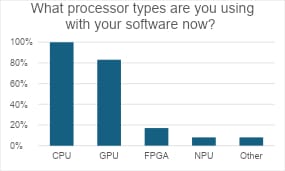
Another question was asked about the use of different processors. During the session I showed some information from a survey that showed >50% of developers are using GPUs. This audience had much higher numbers with >80% of those respondents using GPUs alongside CPUs. This aligns with what I see in terms of published papers and posters at all the major high performance computing and AI conferences. This is a primary driver behind the UXL Foundation’s existence, as it’s now much rarer to see research and applications using just CPUs for their computations. Developers will therefore need software that works across both CPUs and GPUs for their applications, which the UXL provides. Meanwhile, FPGAs seem to continue to be focused on specific workloads and so are not used for more general research projects.
Still a buzz about RISC-V but is it ready?
I have noticed that the RISC-V Birds of a Feather sessions and workshops have been increasing in popularity over the past few years and whilst there is a general focus on CPU designs, and the idea of GPU like processors using RVV (explanation here) has been discussed for a while. The Barcelona Supercomputer Centre (BSC) has been investigating this as part of the European Processor Initiative and has developed a new RVV backend for the oneDNN project, a UXL Foundation governed project. However, there are still questions about the software ecosystem and its readiness for the developer community, and this was a discussion area during the ISC sessions expertly led by Nick Brown from EPCC. The conversations also led to standard toolchains, harnessing the LLVM Compiler project and also making use of SYCL through the DPC++ compiler. The question is whether the community can collaborate well enough to deliver the software that is needed. It is one thing having a single commercial organization providing engineering expertise, but getting collaboration across multiple is a different story. It does usually require one organization to take the lead, so who will do that?
Is C++ the only way to develop for HPC?
I joined the C++ Birds of a Feather session and this was a great session led by Bryce Adelstein Lelbach from NVIDIA who talked about new features added to ISO C++ that will bring better features for parallel development, but he also brought up a controversial topic.
The question is shown in the below image, and challenged the panel and audience about whether C++ is now a legacy language.
The question is intentionally pointed, and the idea of a Birds of a Feather session is to invoke discussion. The best way to do that is controversy! The interesting thing about the response to this was from the views of the panel they see C++ as probably the only viable option for HPC developers right now, especially if writing something new. A language like Rust does solve some of the challenges of C++ but the reality of the situation is that there is a huge ecosystem around C++ in HPC now. It could take a long time to shift away from that. The Tiobe index I linked earlier in this article demonstrates that the reports of C++’s death are greatly exaggerated, and in fact the adoption of the language has increased compared to a few years ago. I think it is likely that we will see a proliferation in Python libraries for HPC developers, but C++ will continue to be widely used by the community.
I think the most likely scenario is to have Python and C++ options for a library, for example I saw this poster for a Python version of the Ginkgo math project.
On the last day of the event I brought together a great team of SYCL experts to run what I think is the 7th SYCL tutorial I have organized and we had a very engaging session with hands on coding and lots of questions. Thank you to the group for their excellent presentations.
The last thing I’ll mention were all the great people I met and had engaging discussions on a variety of topics. This is a big reason to travel to conferences, you can learn new things, set up new collaborations and have the most interesting conversations. I am grateful for all the connections I made during ISC25.
See you next year!

